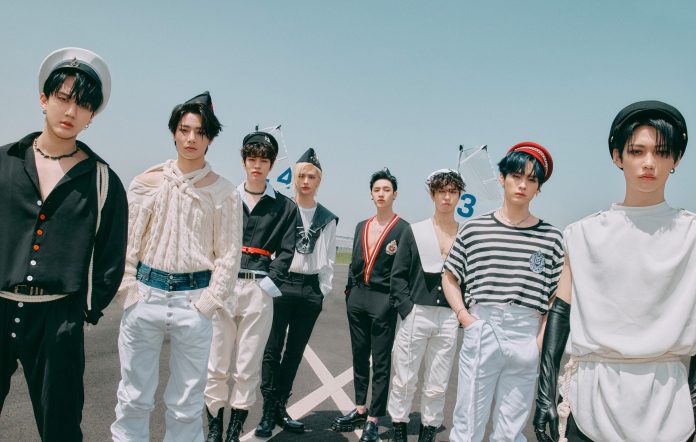A Comparative Analysis: Wes Anderson's Latest Vs. AI-Generated Film

Table of Contents
Stylistic Differences: The Human Touch vs. Algorithmic Aesthetics
Wes Anderson's Signature Style:
Wes Anderson's films are instantly recognizable. His signature style is a meticulously crafted visual language, a hallmark of his directorial vision. Key elements include:
- Symmetrical composition: Perfectly balanced shots create a sense of order and visual harmony.
- Pastel color palettes: Muted, often vibrant, colors contribute to the whimsical and slightly melancholic tone.
- Whimsical storytelling: Anderson’s narratives blend humor, pathos, and a touch of surrealism.
- Distinctive soundtrack: Original scores and meticulously chosen songs enhance the emotional impact.
- Specific camera angles: Unusual perspectives and deliberate framing choices contribute to the unique visual style.
- Recurring actors and themes: The use of familiar faces and recurring themes creates a sense of continuity and personal connection.
- Detailed set design: Intricate sets and props contribute to the immersive and highly stylized world.
- Meticulously planned shots: Each shot is carefully composed and executed, reflecting the director's precise control.
In Asteroid City, these elements are amplified. The symmetrical compositions are more pronounced, the pastel palette even more saturated, and the narrative structure even more intricately layered. The film's meticulously designed sets, from the miniature desert landscape to the detailed interiors of the play within a play, demonstrate Anderson's unwavering commitment to his distinctive visual vocabulary. This level of detailed control showcases the depth of human creativity and the painstaking process involved in crafting a truly unique cinematic experience.
The AI-Generated Film's Aesthetic:
An AI-generated film, on the other hand, relies on the vast datasets it's trained on. Its aesthetic is a reflection of the styles and techniques it has "learned," often resulting in a pastiche of existing cinematic styles. This can lead to:
- Potential for unique visual styles: AI can unexpectedly combine different styles in novel ways.
- Reliance on existing datasets (influences): The AI's output inevitably reflects the data it was trained on, leading to stylistic echoes.
- Limitations in narrative coherence: Generating a compelling narrative remains a significant challenge for AI.
- Potential for stylistic inconsistencies: The lack of a unifying vision can lead to inconsistencies in visual style.
- Exploration of unconventional visual effects: AI might generate unique visual effects not easily achievable through traditional methods.
- Lack of emotional depth (potentially): While AI can mimic emotional cues, it may struggle to generate genuine emotional resonance.
The AI's approach to visual storytelling might feel derivative, borrowing from various sources without a consistent directorial voice. Understanding the dataset used to train the AI is crucial in analyzing its aesthetic choices. The absence of a human director's nuanced understanding of visual language and storytelling creates a notable contrast to Anderson's precisely crafted work.
Narrative Structure and Storytelling: Human Creativity vs. Algorithmic Pattern Recognition
Wes Anderson's Narrative Techniques:
Anderson's storytelling is characterized by:
- Nonlinear storytelling: Asteroid City, for example, employs a multi-layered narrative structure with flashbacks and interwoven storylines.
- Character-driven narratives: The characters' inner lives and relationships drive the plot.
- Layered plots: Multiple storylines intertwine, creating complexity and thematic richness.
- Witty dialogue: Sharp, often ironic, dialogue is a key element of Anderson's films.
- Use of irony and satire: Anderson often uses humor to explore deeper, often melancholic themes.
- Exploration of complex themes: Anderson's films engage with existential questions and universal human experiences.
In Asteroid City, the interwoven narrative threads and the play-within-a-film structure showcase Anderson's masterful control over narrative structure and his ability to create a deeply resonant, albeit complex, story. The blend of humor and melancholy creates a unique emotional experience.
AI's Narrative Capabilities:
AI's narrative abilities are still developing. Current limitations include:
- Potential for predictable plots: AI might rely on established narrative tropes, leading to predictable storylines.
- Reliance on existing narrative structures: AI tends to replicate patterns found in its training data.
- Difficulty in creating complex characters with emotional depth: While AI can generate dialogue, creating truly believable and emotionally complex characters remains a challenge.
- Limited originality: AI narratives often lack the unique spark of human creativity.
- Potential for illogical plot points: The AI might struggle to maintain narrative consistency and logical flow.
An AI-generated narrative might feel formulaic, lacking the nuanced character development, thematic depth, and surprising twists found in Anderson's work. While AI can generate novel combinations of existing narrative structures, the true originality and emotional resonance that comes from a human understanding of storytelling remains absent.
Technological Implications and the Future of Filmmaking
The Role of Technology in Wes Anderson's Work:
While Anderson embraces technology, it's always in service of his artistic vision. His filmmaking utilizes:
- Specific camera technology: Anderson employs techniques to achieve his desired visual style.
- Post-production techniques: Digital techniques enhance his carefully crafted aesthetic.
- CGI (if used): CGI, when used, is subtly integrated to serve the narrative and aesthetic.
- Collaboration with skilled technicians: Anderson collaborates with skilled professionals to bring his vision to life.
Technology enhances Anderson's style but never overshadows it. It's a tool, not the focus.
AI's Potential and Challenges in Film Production:
AI’s role in filmmaking is rapidly evolving:
- AI-assisted filmmaking tools (editing, special effects): AI can automate certain tasks, increasing efficiency.
- Potential for increased efficiency: AI can streamline various stages of production, saving time and resources.
- Concerns about job displacement: Automation raises concerns about the future of jobs in the film industry.
- Ethical implications of AI-generated content: Questions of authorship and intellectual property arise.
- The question of authorship: Who holds creative ownership when AI is involved?
AI has the potential to revolutionize filmmaking but also presents ethical and practical challenges. The debate surrounding authorship, job displacement, and the ethical considerations associated with AI-generated content are crucial conversations to be had.
Conclusion:
The comparison of Asteroid City with an AI-generated film highlights the fundamental differences between human creativity and algorithmic pattern recognition. Wes Anderson's meticulously crafted style and intricate storytelling demonstrate the power of human vision and the painstaking process of filmmaking. In contrast, the AI-generated film, while potentially innovative in its approach to visual effects, reveals the current limitations of AI in generating truly original and emotionally resonant narratives. Both approaches showcase the evolving landscape of filmmaking and highlight the ongoing conversation regarding the role of technology and human creativity in shaping cinematic experiences.
This comparison of Wes Anderson's latest film with an AI-generated counterpart reveals the ongoing evolution of filmmaking. Continue the discussion! Share your thoughts on the future of filmmaking in the comments below. What are your predictions for the role of AI in creating future cinematic masterpieces? Let's explore the exciting possibilities and challenges of AI in film further – join the conversation on AI-generated films and the future of movie making!

Featured Posts
-
 Rose Rm Jimin Ateez And Stray Kids K Pops Amas Nomination Powerhouse
May 28, 2025
Rose Rm Jimin Ateez And Stray Kids K Pops Amas Nomination Powerhouse
May 28, 2025 -
 Tim Kiem Kho Bau 13 Trieu Usd Bi Chon Giau Cua Rau Den Chuyen Chua Ke
May 28, 2025
Tim Kiem Kho Bau 13 Trieu Usd Bi Chon Giau Cua Rau Den Chuyen Chua Ke
May 28, 2025 -
 Offre Speciale Samsung Galaxy S25 128 Go A 648 E
May 28, 2025
Offre Speciale Samsung Galaxy S25 128 Go A 648 E
May 28, 2025 -
 Ou Acheter Le Samsung Galaxy S25 256 Go Au Meilleur Prix
May 28, 2025
Ou Acheter Le Samsung Galaxy S25 256 Go Au Meilleur Prix
May 28, 2025 -
 Magyarorszag Idojarasa Csapadek Es Tavaszias Meleg
May 28, 2025
Magyarorszag Idojarasa Csapadek Es Tavaszias Meleg
May 28, 2025
Latest Posts
-
 Rsalt Alshykh Fysl Alhmwd Bmnasbt Eyd Astqlal Alardn Ebr Jw 24
May 30, 2025
Rsalt Alshykh Fysl Alhmwd Bmnasbt Eyd Astqlal Alardn Ebr Jw 24
May 30, 2025 -
 Eyd Astqlal Alardn Thnyt Khast Mn Alshykh Fysl Alhmwd Ebr Jw 24
May 30, 2025
Eyd Astqlal Alardn Thnyt Khast Mn Alshykh Fysl Alhmwd Ebr Jw 24
May 30, 2025 -
 Alshykh Fysl Alhmwd Yhny Alardn Baleyd Alwtny Rsalt Jw 24
May 30, 2025
Alshykh Fysl Alhmwd Yhny Alardn Baleyd Alwtny Rsalt Jw 24
May 30, 2025 -
 Thnyt Alshykh Fysl Alhmwd Llardn Beyd Alastqlal Ma Zlt Asher Anny Byn Ahly
May 30, 2025
Thnyt Alshykh Fysl Alhmwd Llardn Beyd Alastqlal Ma Zlt Asher Anny Byn Ahly
May 30, 2025 -
 The Complete Guide To Air Jordan Releases May 2025
May 30, 2025
The Complete Guide To Air Jordan Releases May 2025
May 30, 2025
